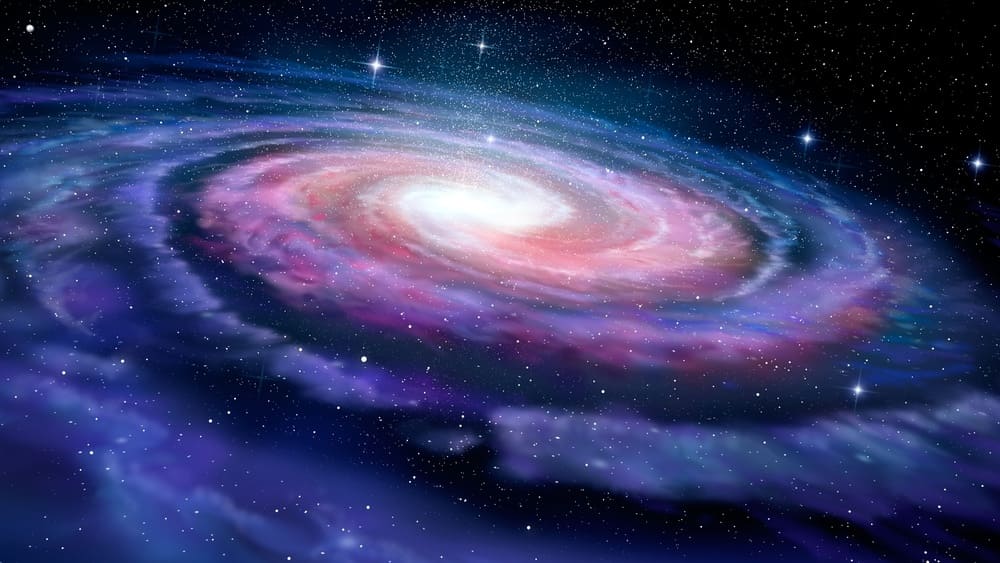The Milky Way Galaxy, our galactic home, is an immense and wondrous celestial neighborhood that has fascinated astronomers and stargazers for centuries. Nestled in the vastness of the universe, it serves as a stellar city, a galactic system teeming with stars, planets, and cosmic phenomena. This article delves into the intricate details of our galactic home, exploring its structure, composition, and the myriad mysteries it holds.
Structure and composition of the Milky Way Galaxy
At the heart of the Milky Way Galaxy lies its galactic core or nucleus, a densely packed region teeming with stars, gas, and dust. This central bulge is believed to house a supermassive black hole known as Sagittarius A, which exerts a gravitational force so immense that not even light can escape its grasp. Surrounding the nucleus are the spiral arms, stellar arms that wind outward, creating the characteristic spiral structure of our galaxy.
These spiral arms are home to billions of stars and numerous star clusters. These clusters, often referred to as stellar congregations, are groupings of stars bound together by gravity. The most notable ones include open clusters and globular clusters, each with unique characteristics and ages.
Stellar birth and death
The Milky Way is a dynamic environment where stars are constantly born and die. Nebulae, or stellar nurseries, are vast clouds of gas and dust where new stars are formed. These regions are illuminated by the intense radiation of young, hot stars, creating stunning visual displays observable through powerful telescopes like the Hubble Space Telescope.
Conversely, stars end their lives in dramatic fashion through events known as supernovae. These stellar explosions scatter heavy elements throughout the galaxy, enriching the interstellar medium and paving the way for new star formation. The remnants of these explosions can be observed as neutron stars or black holes.
Dark matter and dark energy
A significant portion of the Milky Way Galaxy remains shrouded in mystery, particularly concerning dark matter and dark energy. Dark matter, an unseen yet massive component, exerts gravitational forces that influence the rotation and structure of the galaxy. Though it cannot be directly observed, its presence is inferred through its gravitational effects on visible matter.
Dark energy, on the other hand, is thought to be responsible for the accelerated expansion of the universe. This mysterious force remains one of the most significant enigmas in cosmology, challenging our understanding of the universe’s fundamental properties.
Solar System and exoplanets
Our Solar System, a planetary system within the Milky Way, is situated in one of the spiral arms known as the Orion Arm. It comprises the Sun and its orbiting planets, asteroids, and comets. The Solar System serves as a microcosm of the galaxy, offering insights into planetary formation and dynamics.
Beyond our Solar System lie exoplanets, or extrasolar planets, which orbit stars other than our Sun. These alien worlds have become a focal point of astronomical research, with the potential to harbor life and offer clues about planetary systems’ diversity and formation.
Interstellar space and the cosmic web
The regions between the stars in the Milky Way are known as interstellar space. This vast expanse is not empty but filled with cosmic dust, gas, and particles that play crucial roles in star formation and the propagation of light. Interstellar space also contains magnetic fields and cosmic rays that influence the dynamics of the galaxy.
On a larger scale, the Milky Way is part of the cosmic web, a vast network of galaxies interconnected by filaments of dark matter and gas. This cosmic structure reveals the intricate and interconnected nature of the universe, with galaxies forming clusters and superclusters.
The Milky Way’s galactic neighbors
The Milky Way is not an isolated galaxy; it is part of the Local Group, a collection of galaxies that includes the Andromeda Galaxy (M31), the Triangulum Galaxy (M33), and numerous dwarf galaxies. The Andromeda Galaxy, our closest spiral galaxy neighbor, is on a collision course with the Milky Way, with the two expected to merge in several billion years, forming a new galaxy.
Galactic evolution and cosmology
The study of the Milky Way Galaxy provides valuable insights into galactic evolution and cosmology. By examining the distribution of stars, star clusters, and gas within the galaxy, astronomers can reconstruct its formation history and understand the processes that have shaped its current structure.
Cosmology, the study of the universe’s origin, structure, and evolution, relies heavily on observations of galaxies like the Milky Way. The Cosmic Microwave Background (CMB), the afterglow of the Big Bang, offers a glimpse into the early universe, helping scientists refine their models of cosmic evolution.
Technological advances and future exploration
Advancements in technology, particularly in telescopes and space probes, have revolutionized our understanding of the Milky Way. The Hubble Space Telescope has provided unprecedented views of distant stars, nebulae, and galaxies, while missions like the Gaia spacecraft are mapping the precise positions and motions of stars within the galaxy.
Future missions and observatories, such as the James Webb Space Telescope, promise to unveil even more secrets of the Milky Way. These technological marvels will continue to enhance our understanding of the galaxy, offering new perspectives on its structure, composition, and the processes that govern its evolution.
The Milky Way Galaxy, our galactic home, is a magnificent and complex system that continues to captivate and inspire. From its spiral arms to its galactic core, the Milky Way is a treasure trove of celestial wonders and mysteries. As we advance our technological capabilities and deepen our understanding of the universe, the Milky Way will remain a central focus of astronomical research, offering endless opportunities for discovery and exploration.
Our journey through the cosmos begins here, in this stellar city, our cosmic home. The Milky Way Galaxy stands as a testament to the beauty and complexity of the universe, a reminder of our place in the vastness of space.


